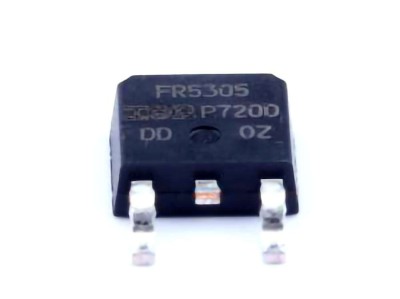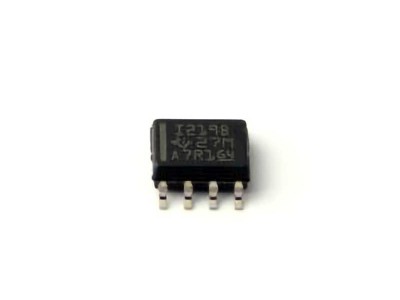
The LM393 is one of the most widely used voltage comparator s in electronic circuits. This article explores its working principle, key features, and typical application circuits, offering a comprehensive guide for engineers and electronics enthusiasts to fully understand its potential and capabilities. Whether you're designing simple analog circuits or complex systems, this article provides valuable insights into how the LM393 can be leveraged effectively.
LM393, voltage comparator, working principle, application circuit, electronic components, analog circuits, low Power , open collector output, comparator IC, electrical design
Understanding the LM393 Voltage Comparator
The LM393 is a dual voltage comparator integrated circuit (IC) that has been a staple in the field of electronics for many years. Produced by several manufacturers, such as Texas Instruments, ON Semiconductor, and others, the LM393 is known for its reliability, low power consumption, and versatility. In this section, we’ll dive into the working principle of the LM393, its features, and how it fits into a variety of electronic applications.
What is a Voltage Comparator?
At its core, a voltage comparator is a type of analog device used to compare two input voltages and output a signal indicating which one is higher. A voltage comparator does not have any feedback mechanism, meaning it operates in an open-loop configuration. The result of the comparison is typically a binary output: high or low, depending on which input is greater.
For example, in a simple configuration, if the non-inverting input (often labe LED as +) is higher than the inverting input (labe LED as -), the output of the comparator will be high, and vice versa. Voltage comparators are essential in a wide range of applications, from simple thresholds in systems to complex feedback loops.
Key Features of LM393
Before delving deeper into its working principle, let’s take a quick look at the primary features that make the LM393 a popular choice in voltage comparison tasks:
Dual Comparator: The LM393 contains two independent comparators in one package, making it a cost-effective solution for systems requiring multiple comparators.
Low Power Consumption: The LM393 operates with very low supply currents, making it suitable for battery-operated applications or power-sensitive designs.
Open Collector Output: One of the defining features of the LM393 is its open collector output. This allows the output to be easily interface d with different voltage levels or to work in systems requiring an active-low signal.
Wide Supply Voltage Range: The LM393 can operate with a supply voltage range from 2V to 36V, making it flexible for various power sources.
Hysteresis: The LM393 can be used with or without hysteresis, providing greater flexibility depending on the specific application.
Rail-to-Rail Input: The input voltage range is close to the ground (0V), which is advantageous in low-voltage or low-signal designs.
Working Principle of the LM393
The LM393 is based on a high-gain differential amplifier. To understand how it works, consider the following key steps:
Differential Input: The comparator has two inputs, typically marked as inverting (-) and non-inverting (+). The voltage at the non-inverting input is compared with the voltage at the inverting input.
Output Behavior: The output is driven low when the voltage at the inverting input exceeds the voltage at the non-inverting input. Conversely, when the voltage at the non-inverting input is higher than the voltage at the inverting input, the output will go high.
Open Collector Output: The output of the LM393 is an open collector, meaning it can only pull the output to a low state. To achieve a high state, an external pull-up resistor is used to pull the output voltage to the desired level.
Saturation Region: Due to the high gain of the internal transistor , the output of the LM393 switches sharply between the low and high states, creating a near-binary response. This sharp transition is what makes the LM393 suitable for applications that require fast switching and precise comparisons.
Because of its open collector output, the LM393 is ideal for interfacing with logic circuits or systems that need to detect changes in a signal when it crosses a specific threshold.
Advantages of Using the LM393
The LM393’s unique design and feature set offer several advantages:
Flexibility in Output: The open collector output can be connected to different voltages or logic levels. It allows integration into systems with different voltage requirements without causing compatibility issues.
Low Power Consumption: The LM393 operates with very low current consumption, typically around 1mA per comparator, making it perfect for low-power designs.
Cost-Effective: With the dual comparator configuration, users can achieve two comparators for the price of one IC, thus reducing the cost of components in multi-comparator designs.
Noise Immunity: With proper design considerations, the LM393 provides good immunity to electrical noise, making it reliable for industrial applications.
Compatibility: The wide supply voltage range (2V to 36V) and the low input voltage threshold make the LM393 compatible with a wide range of systems, from simple microcontroller-based designs to more complex systems requiring high-precision voltage comparisons.
Typical Application Circuits of the LM393 Voltage Comparator
The LM393 is an extremely versatile component, used in a wide array of applications. Its role in voltage threshold detection, signal conditioning, and simple feedback systems makes it an essential tool for electronics engineers. In this section, we’ll cover several common application circuits for the LM393, showcasing its practical uses in real-world designs.
1. Voltage Level Detection (Threshold Detection)
One of the most common applications of the LM393 is in voltage level detection circuits. These circuits monitor an input voltage and trigger an event when the voltage exceeds or falls below a predefined threshold.
Use Case: This configuration is widely used in battery-powered systems to monitor battery voltage, where the comparator triggers an alert when the voltage drops below a specified value, indicating the need for recharging.
2. Comparator with Hysteresis (Schmitt Trigger)
The LM393 is often used with hysteresis, a technique that provides stability and noise immunity to the comparator circuit. This is known as creating a Schmitt Trigger, which introduces a threshold offset to ensure that small fluctuations around the threshold don’t cause rapid switching between the output states.
Use Case: Schmitt triggers are used in noisy environments, such as signal conditioning in communication systems or for cleaning noisy square wave signals in digital circuits.
3. Pulse Width Modulation (PWM) Generation
The LM393 can be employed in PWM generation circuits, where it is used to compare a reference voltage with a sawtooth waveform, producing a duty cycle-modulated output.
Use Case: This application is used in motor speed control, dimming of LED lights, and audio modulation systems.
4. Overcurrent Protection Circuit
The LM393 can be utilized in overcurrent protection circuits, where it monitors the current flowing through a load and compares it with a preset threshold. If the current exceeds the threshold, the LM393 triggers a shutdown or protective action.
Use Case: This configuration is crucial in power supplies, motor controllers, and battery-powered devices to prevent damage caused by excessive current.
5. Window Comparator Circuit
In some applications, it’s necessary to check whether an input voltage is within a specific range. A window comparator circuit, using two LM393 comparators, is ideal for this purpose.
Use Case: This circuit is used in precision measurement instruments, where a signal must fall within a specific range to be considered valid.
6. Zero Crossing Detector
The LM393 can also be used as a zero-crossing detector, which identifies when an AC signal crosses zero volts. This is particularly useful in phase-locked loops ( PLLs ) and other synchronization applications.
Use Case: Zero crossing detectors are critical in timing circuits, signal synchronization in communication systems, and phase detection in motor controllers.
Conclusion
The LM393 voltage comparator is an essential tool in the electronics toolkit. Its ability to compare two voltages and output a clear, binary response makes it highly useful for a variety of tasks, from simple threshold detection to more advanced applications like PWM generation and overcurrent protection.
Its low power consumption, dual comparator design, and open-collector output make it a versatile and cost-effective choice for engineers working with analog and digital circuits. Whether you're working on a battery-powered system, building an audio circuit, or designing precision measurement instruments, understanding the working principle and typical application circuits of the LM393 opens up a wealth of possibilities in your designs.
If you are looking for more information on commonly used Electronic Components Models or about Electronic Components Product Catalog datasheets, compile all purchasing and CAD information into one place.


